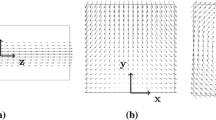Abstract
Thermodilution measurements of clinically important cardiac parameters, such as cardiac output and stroke volume, are subject to many sources of error. The temperature fluctuations (thermal noise) normally found in the pulmonary artery constitute one of these sources of errors. To improve the signal-to-noise ratio of thermodilution flow measurements rather than increase the signal level, we investigated four signal processing strategies designed to reduce the thermal noise power. We applied the noise reduction strategies to thermal noise data, containing simulated thermodilution curves, obtained in a mock circulatory loop. We compared the accuracy and reproducibility of the curve area estimates produced by the algorithms to the area estimates obtained by numerical integration of the thermal signal. Our results show that a bandpass (BP) integration technique combined with a noise canceler can improve thermodilution curve area estimate reproducibility and accuracy. The BP integration technique improved the reproducibility of cardiac output measurements by roughly 16 dB and is directly applicable to most thermodilution hardware currently in use. The more accurate noise cancelers, combined with the BP integration technique, provided correspondingly improved signal-to-noise ratios, with the improvement ranging up to 50 dB.
Similar content being viewed by others
References
Afonso, S.; Herrick, J.F.; Rowe, G.G.; Crumpton, C.W. Temperature variations in the venous system of dogs. Am. J. Physiol. 203:278–282; 1962.
Antman S., Foundations of indicator dilution theory. In: Bloomfield, D.A. ed. Dye Curves: The Theory and Practice of Indicator Dilution, Baltimore: University Park Press; 1974: pp. 24–29.
Barankay, T.; Jancsó, T.; Nagy, S.; Petri, G.. Cardiac output estimation by a thermodilution method involving intravascular heating and thermistor recording. Acta Physiol. Acad. Sci. Hung. 38(2–3):167–173; 1970.
Bassingthwaighte, J.B.; Ackerman, F.H.; Wood, E.H. Applications of the lagged normal density curve as a model for arterial dilution curves. Circ. Res. 18:398–415; 1966.
Elkayam, U.; Berkley, R.; Azen, S.; Weber, L.; Geva, B.; Henry, W.L. Cardiac output by thermodilution technique: Effect of injectate volume and temperature on the accuracy and reproducibility in the critically ill patient. Chest 84:418–422; 1983.
Ganz, W.; Swan, H.J.C. Measurement of blood flow by thermodilution. Am. J. Cardiol. 29:241–246; 1972.
Johnson, R.W.; Normann, R.A. Mathematical and mechanical modeling of heat transport through the heart. Ann. Biomed. Eng. 15:603–617; 1987.
Khalil, H.H.; Richardson, T.Q.; Guyton, A.C. Measurement of cardiac output by thermal-dilution and direct Fick methods in dogs. J. Appl. Physiol. 21:1131–1135; 1966.
Maron, M.J. Numerical analysis: A practical approach, 2nd ed., New York: Macmillan; 1987; p. 420.
Philip, J.H.; Long, M.C.; Quinn, M.D.; Newbower, R.S. Continuous thermal measurement of cardiac output. IEEE Trans. Biomed. Eng. 31:393–399; 1984.
Riedinger, M.S.; Shellock, F.G. Technical aspects of the thermodilution method for measuring cardiac output. Heart Lung 13:215–221; 1984.
Stawicki, J.J.; Holfold, F.D.; Michelson, E.L.; Josephson, M.E. Multiple cardiac output measurements in man. Chest 76:193–197; 1979.
Wessel, H.U.; Paul, M.H.; James, G.W.; Grahn, A.R. Limitations of thermodilution curves for cardiac output determinations. Appl. Physiol. 30:643–652; 1971.
Woods, M.; Scott, R.N.; Harken, A.H. Practical considerations for the use of a pulmonary artery thermistor catheter. Surgery 79:469–475; 1976.
Author information
Authors and Affiliations
Rights and permissions
About this article
Cite this article
Johnson, R.W., Normann, R.A. Signal processing strategies for enhancement of signal-to-noise ratio of thermodilution measurements. Ann Biomed Eng 16, 265–278 (1988). https://doi.org/10.1007/BF02368003
Received:
Revised:
Issue Date:
DOI: https://doi.org/10.1007/BF02368003




